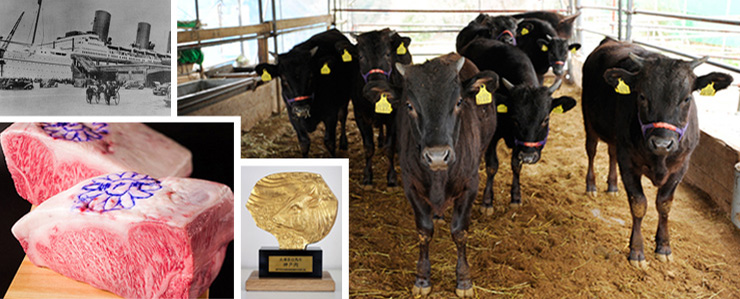KOBE BEEF

No cow comes into this world and begins its life as Kobe beef.
Kobe beef refers to cuts taken from the Tajima strain of Wagyu cattle raised in Hyogo Prefecture (Japan). Even among “Tajima-gyu” (Tajima cattle), only the chosen few that satisfy the specific quality criteria set out by the Kobe Beef Marketing & Distribution Promotion Association deserve the title "Kobe Beef".
Calves are given only the very best feed - rice straw, maize, barley and other cereals - and receive only fresh, clean water to drink. Their meat matures to the ideal quality and texture from the minimum age of 28 months upwards, and at an average age of 32 months.
Only bullocks or virgin Tajima cows - in particular those that satisfy the following carcass grading and other conditions - are entitled to the name "Kobe beef":
- ・BMS (Beef Marbling Standard) of 6 or higher
- ・A yield score (percentage of edible parts) of A or B
- ・A gross carcass weight of 470kg or less
- ・Fine meat texture and excellent firmness
The fine, delicate meat has a high degree of fat marbling that melts at low temperatures, together with tender fibres and its own uniquely refined sweetness and aroma.
From a historical perspective, it all began when the port of Kobe was opened to foreign trade in 1868. Kobe soon became a cosmopolitan town with many foreigners arriving from abroad and settling there. It's said that Tajima cattle were first eaten in Kobe by an Englishman who persuaded some farmers to give him a cow that had been used for various agricultural tasks. He must have felt it was a gift from heaven! From then on, foreign ships entering the port of Kobe started to ask for deliveries of cattle and beef, which rapidly became known as“Kobe Beef”. Even today, there are countless American politicians, Hollywood stars, international "royals", and other celebrities who insist on Kobe beef whenever they visit Japan.









